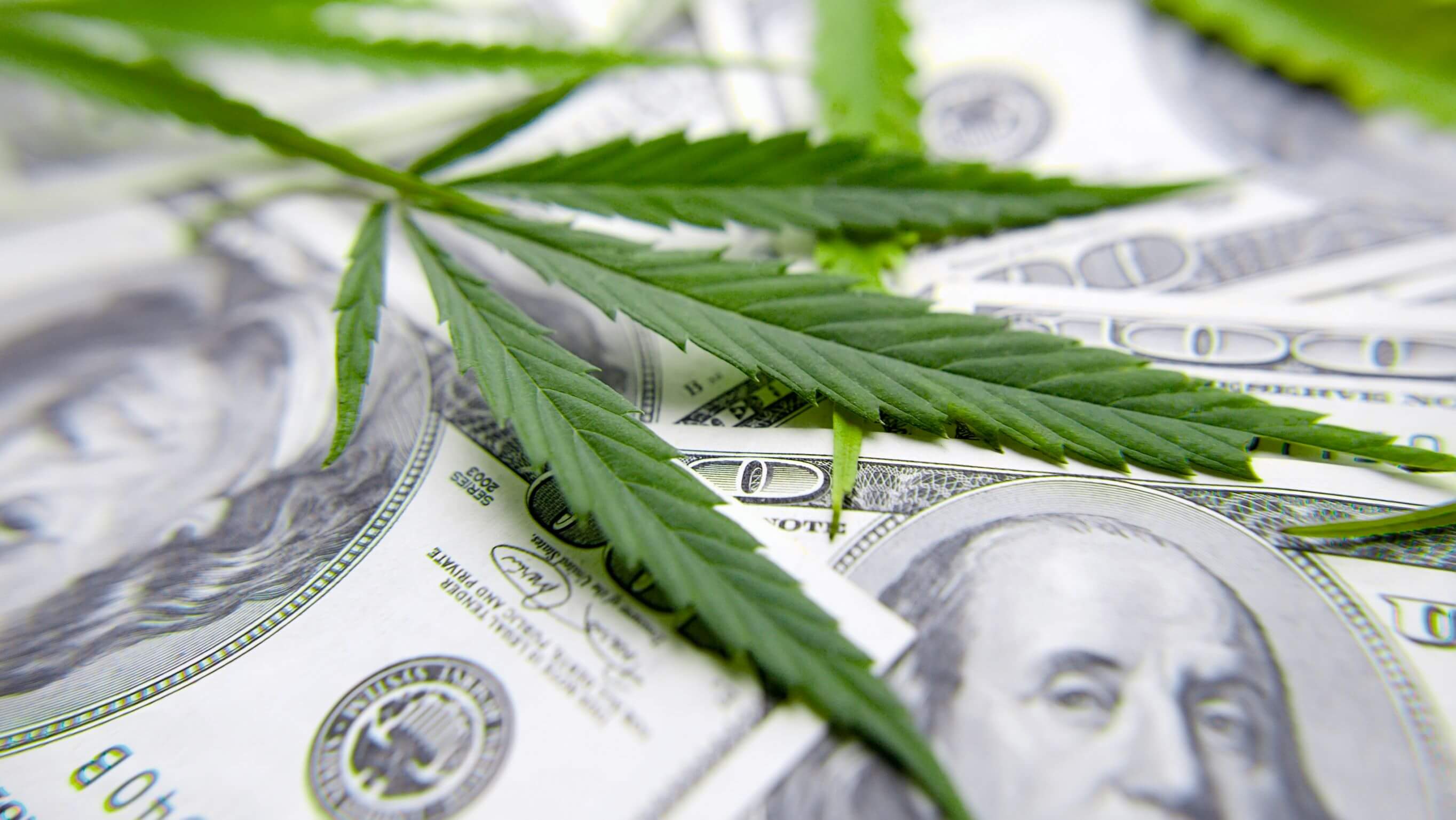Resources
Colorado state tax revenue from the legal cannabis industry surpassed $2 billion in January and the state has collected more than $88.7 million in fees.
In addition to state and local taxes and fees, cannabis businesses have an effective federal tax rate of about 70% – compared to about 26% for other businesses.
Did you know Colorado legal cannabis dispensary owners are unable to deduct normal business expenses like payroll and rent from their federal income taxes?
Marijuana has contributed over $320 Million dollars to Building Excellent Schools Today (B.E.S.T.), making up about 25% of the program's entire budget.
In FY 21-22 alone, nearly $15.3 million in state cannabis dollars went to state Affordable Housing Grant and Loans.
The Marijuana Tax Cash Fund collected $188.8 Million in FY 2021-22 alone.
In FY 21-22 alone, nearly $15 million in cannabis dollars went to the School Health Professional Grant program.
More than $15 million in cannabis dollars went to substance abuse treatment in FY 21-22.
More than $1.6 million cannabis dollars went to the Tony Grampsas Youth Services Program in FY 21-22.
Voters in 59 of 64 Colorado counties voted no on Proposition 119 sending a clear message against raising taxes on cannabis consumers.
Unlike other legalized substances, the marijuana industry has a 97% compliance rate for unauthorized sales.
Unlike alcohol, research has proven you can only get “so high.” Cannabinoid receptors in your brain eventually prevent the body from getting further intoxicated.
Did you know? Since legalization in 2005, teen use in Colorado has remained flat and is below the national average.
According to a recent poll by the Pew Research Center, more than 90% of Americans think cannabis use should be legal.
Did you know? MIG represents more than 400 cannabis business licenses across the state.
A 2021 study found that medical cannabis use was associated with clinical improvements in pain, function, and quality of life with reductions in prescription drug use.
Founded in 2010, MIG is the oldest and largest trade association for licensed cannabis businesses.
Colorado’s marijuana model has become the example for all other regulated cannabis states, and MIG works directly with policy makers to ensure that Colorado’s program is fair, tightly regulated, safe, and successful.
Safe Sales: Every marijuana sale in CO takes place on camera and requires multiple ID checks.
All regulated marijuana in Colorado is tracked from “seed to sale,” with oversight from the Marijuana Enforcement Division.
Established in 2010, MIG has led legislation for child resistant packaging, customer safety resources, and purchase restrictions for 18-20 year olds.
Marijuana is taxed at both state and local levels. This year Aurora built a new $34 Million dollar rec center, fully funded by local marijuana taxes.
The marijuana industry suffers from unfair Federal tax rules, which means that MIG members’ effective tax rates are around 71%.
A 2019 study showed that crime does not increase with legalization.
Conditions for medical marijuana
Cancer - Glaucoma - HIV or AIDS - Cachexia - Persistent muscle spasms - Seizures - Severe nausea - Any condition for which a physician could prescribe an opioid - Autism Spectrum Disorder - Severe pain - PTSD
Most marijuana businesses have access to banks, but because marijuana is still federally illegal, businesses are unable to access merchant processing services such as VISA or Mastercard.
Consuming higher potency marijuana does not lead to higher levels of impairment.
-- Journal of the American Medical Association (JAMA) 2020
71% of Colorado voters favor marijuana legalization. This has increased 10 points in the last four years alone.

Marijuana Industry Group Reaffirms Goal of Preventing Youth Access, Highlights Record of Success
MIG Press Release
FOR IMMEDIATE RELEASE
DATE: April 11, 2022
CONTACT: Madeleine Schmidt
Marijuana Industry Group Reaffirms Goal of Preventing Youth Access, Highlights Record of Success
DENVER -- In light of recent reporting regarding underage compliance checks in the marijuana industry, the Marijuana Industry Group (MIG) is emphasizing the industry’s commitment and record of success when it comes to preventing youth access. Recent reports from the Denver Post and the Denver Gazette miss key context and statistics regarding the cannabis industry’s track record of preventing youth use and prioritizing public health and safety.
“As a small cannabis business owner and a mother of three, I’m incredibly proud of our industry’s extraordinarily high youth compliance rate of 95-97%,” said Tiffany Goldman, Board Chair of MIG. “Preventing youth access to cannabis has always been a top priority in Colorado’s cannabis industry and MIG has partnered with the state to encourage safe, legal cannabis use for nearly a decade. The way MED is conducting their inspection and compliance system prioritizes safety and youth prevention, rather than simply doing a checkbox for the number of inspections they could conduct.”
Recently, Ron Kammerzell, the former Senior Director of Enforcement for the Colorado Department of Revenue which oversaw compliance for the Marijuana Enforcement Division (MED), submitted the attached testimony in regards to how compliance checks are done and best practices for how they should be done in Colorado.
“As the state’s former Senior Director of Compliance overseeing the MED, I know the division follows nationally-established best practices for how they conduct oversight, and this means the inspections follow the risk,” said Ron Kammerzell. “Marijuana has consistently maintained the state’s highest underage compliance rate for a regulated industry, so the risk profile is lower than industries like alcohol. MED is making a wise investment of their resources by balancing underage inspection with other inspections that also reinforce the ID check process.”
The marijuana industry consistently has the best underage compliance rate for any regulated substance, between 95-97% compliance
- Just a decade ago, underage compliance within liquor stores was consistently below 90%, so the state invested resources into doing more compliance checks. Even with these greater resources, today the compliance rate among liquor stores is only 92%. Because of this history, alcohol presents a greater risk for underage sales, so it follows that the state would invest greater resources in continuing to do a higher rate of compliance checks on that industry.
- The marijuana industry has consistently exceeded all other regulated industries in their underage compliance rate, ranging between 95-97% compliance every single year since legalization. Because marijuana has not had the same history of poor compliance, there is a lower risk profile for this industry.
The marijuana industry is better set up to prevent anyone underage from making a purchase, so compliance checks should adapt to meet that risk profile.
- The setup for dispensaries is fundamentally different from liquor stores, making it more likely to prevent underage Coloradans from purchasing marijuana. It also means the kinds of inspections that MED is currently investing in are well structured to reinforce underage compliance.
- Alcohol: Technically minors may only enter the store with an adult, but there is no ID verification at entry to ensure this happens. Minors can and do enter liquor stores regularly, and they can easily access liquor without a licensed employee simply by taking it down from the shelf.
- Marijuana: Only adults (18 for medical and 21 for retail) who have had their ID verified at the door may enter the restricted sales area. In most cases, marijuana and marijuana products within the restricted sales area are controlled behind a counter and only accessible by licensed and badged employees so a minor cannot take a product down from a shelf.
- MED is conducting 160 inspections of marijuana dispensaries this year, and as part of that effort they are inspecting the ID-checking process such as making sure ID scanners and security cameras are working. These inspections also reinforce the process by which the marijuana industry prevents underage access.
Please see testimony from Ron Kammerzell for full background.
Additional Info
Media Contact : Madeleine Schmidt: madeleines@strategies360.com








